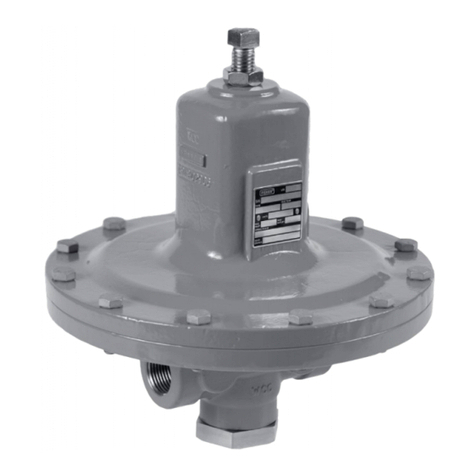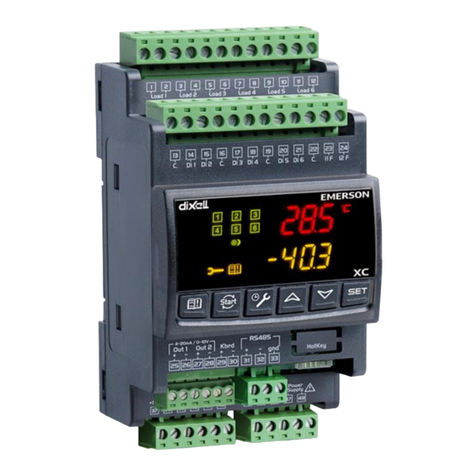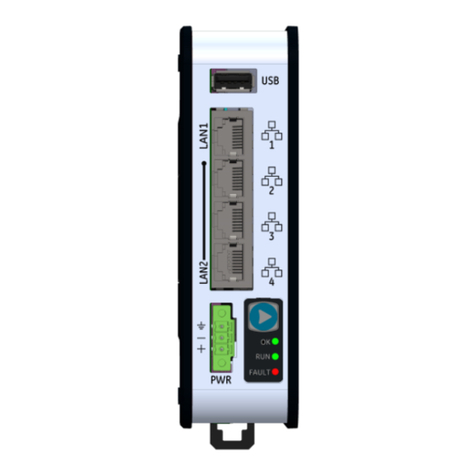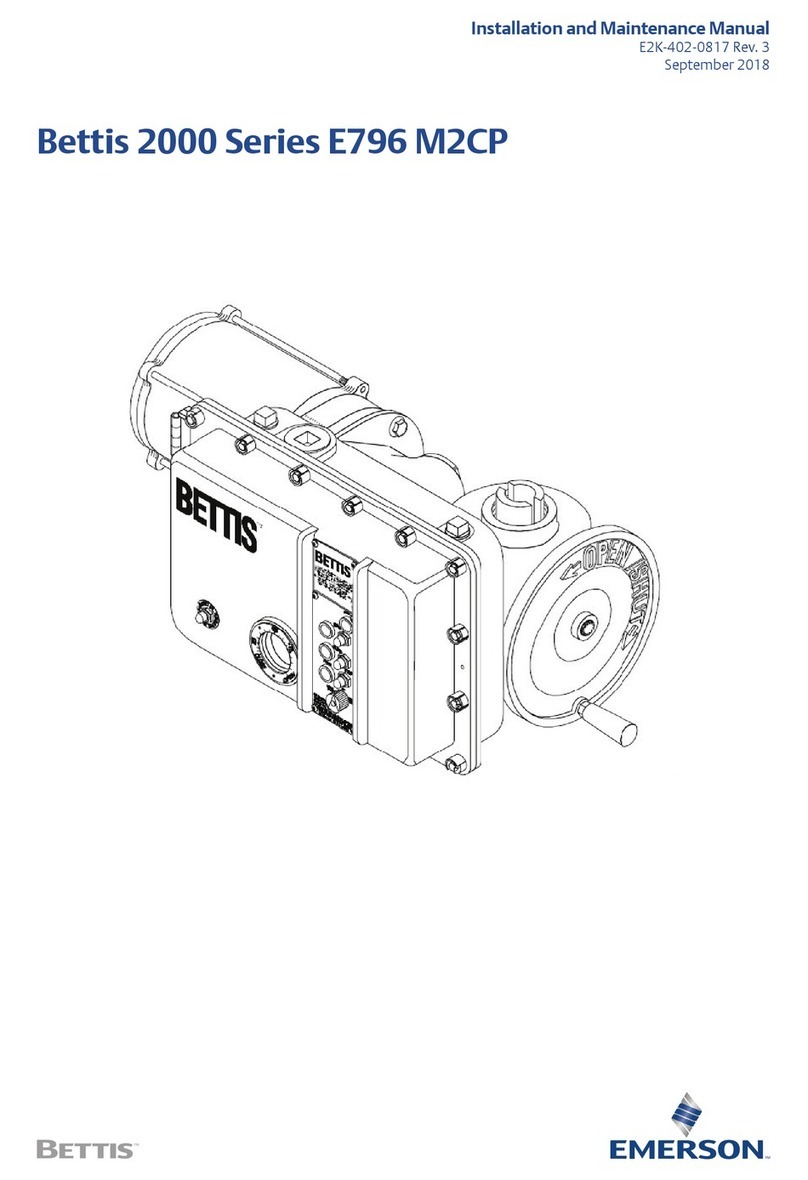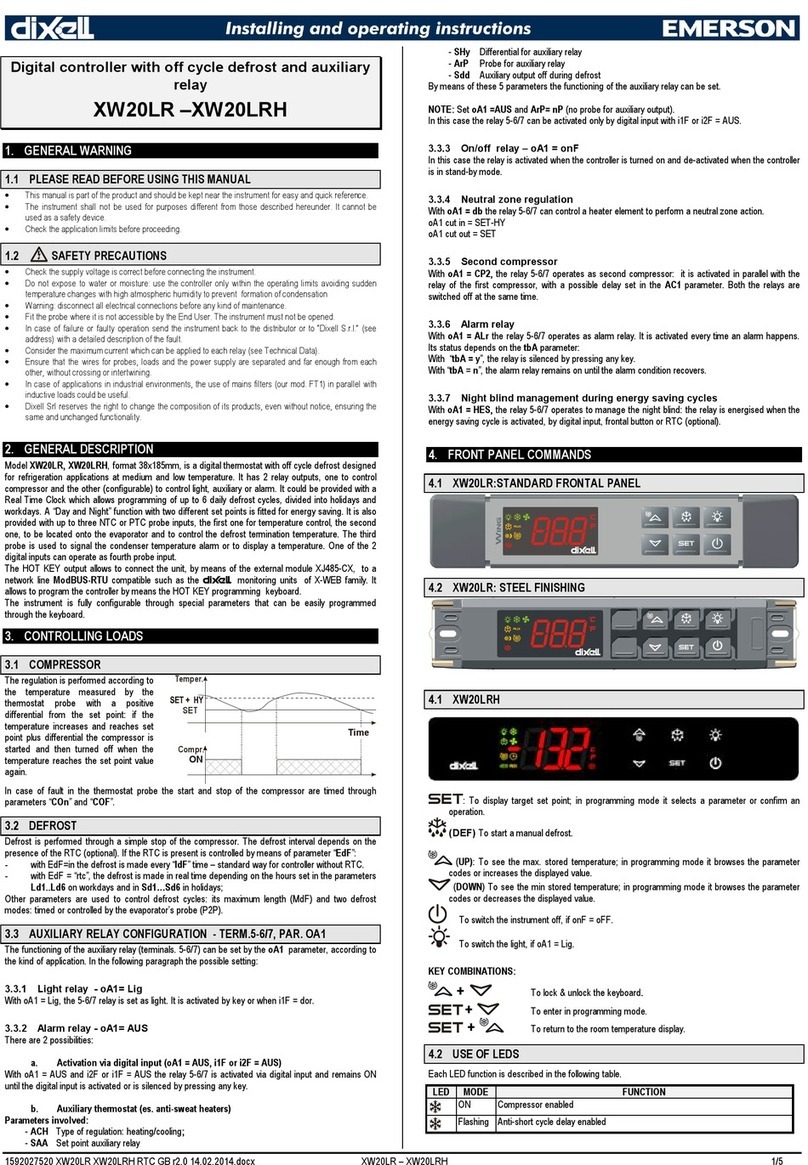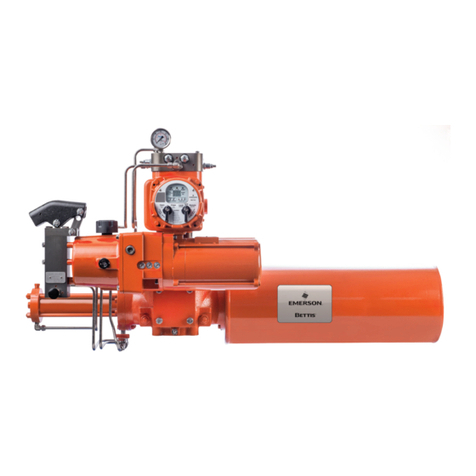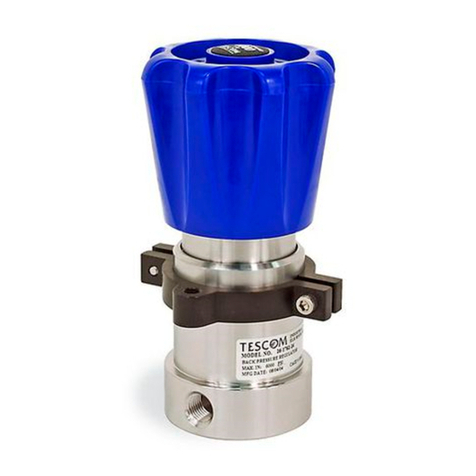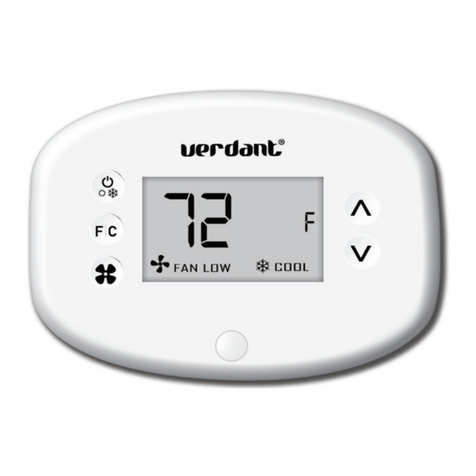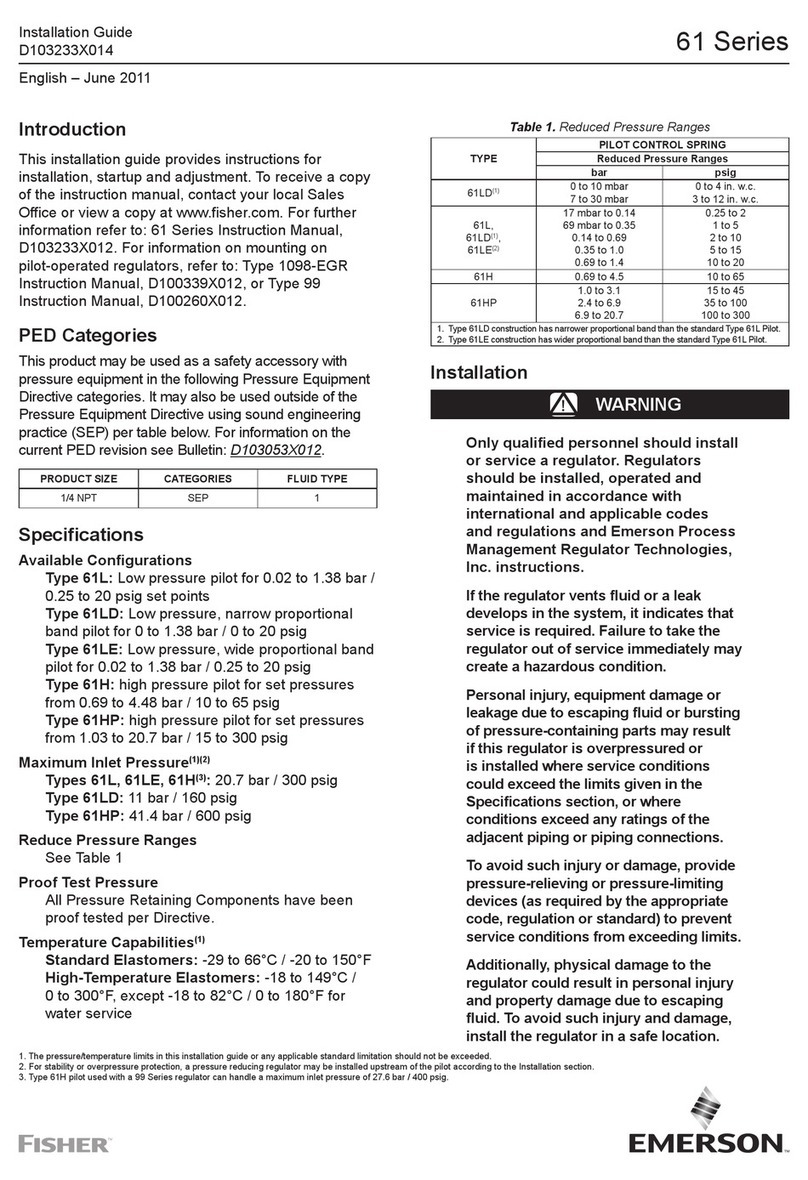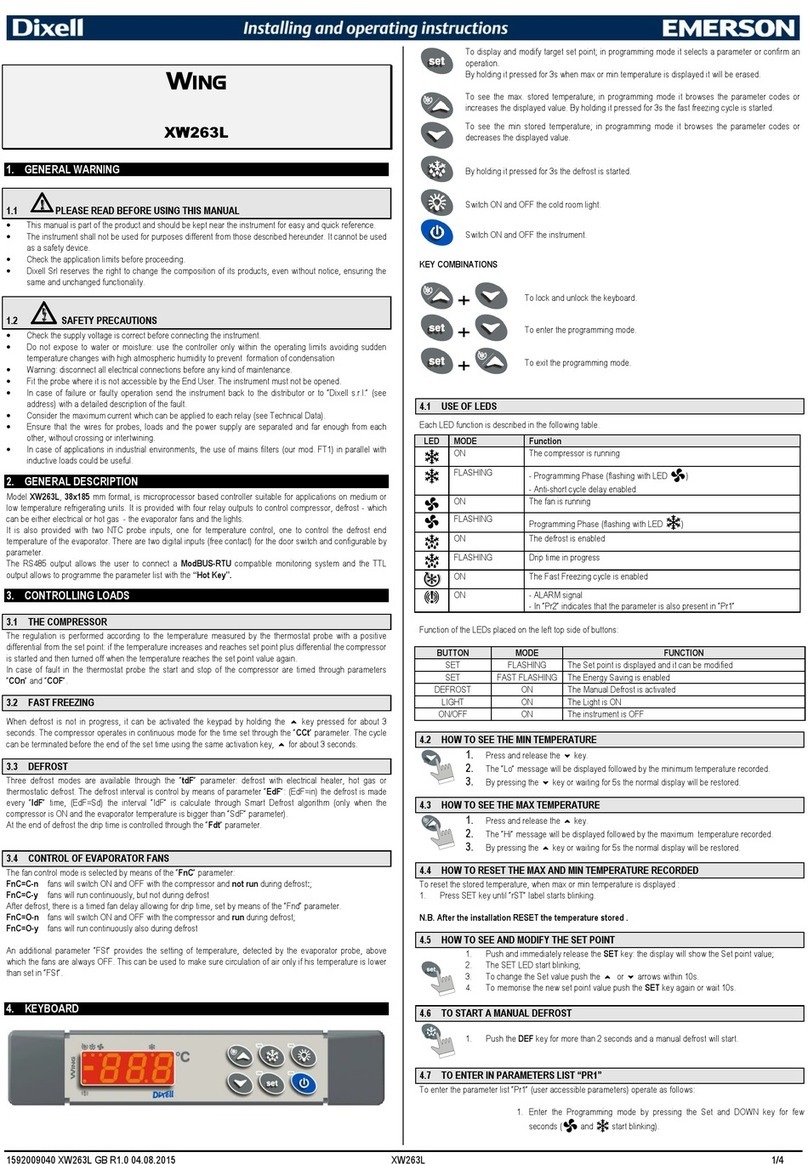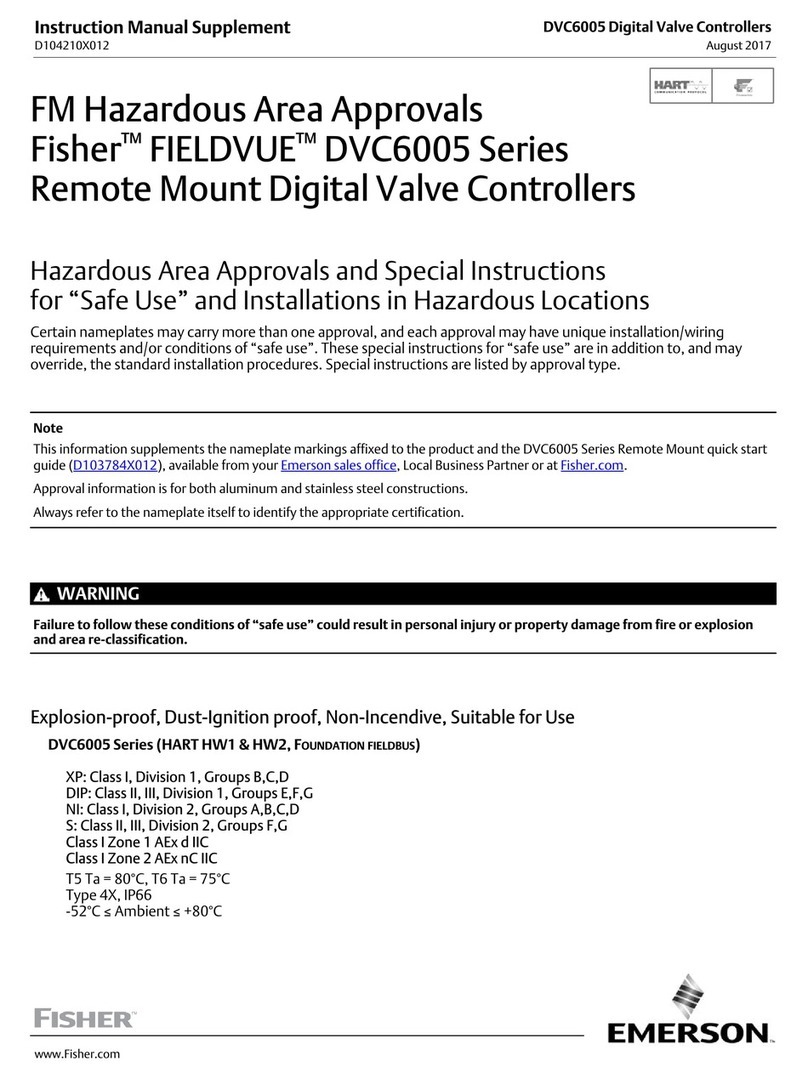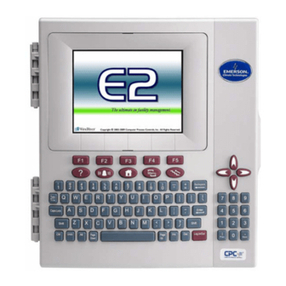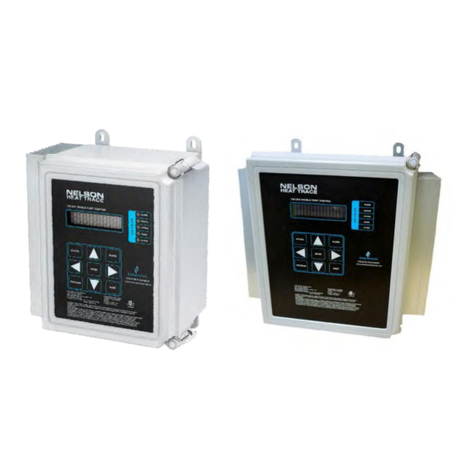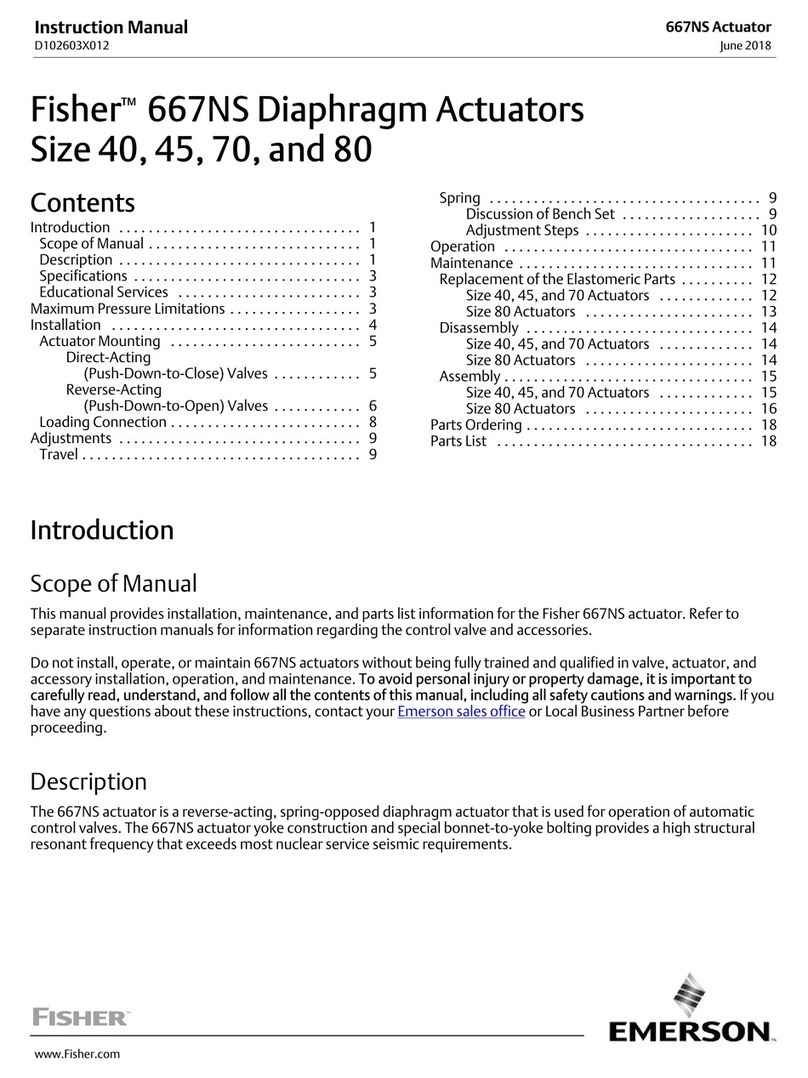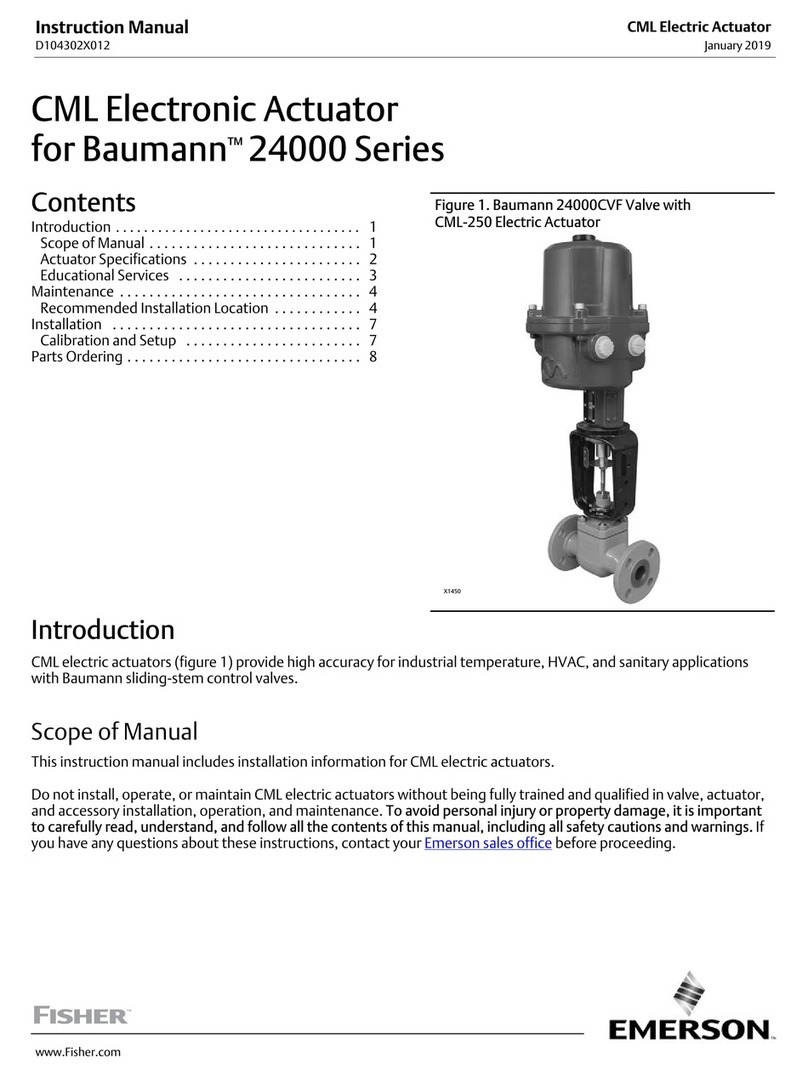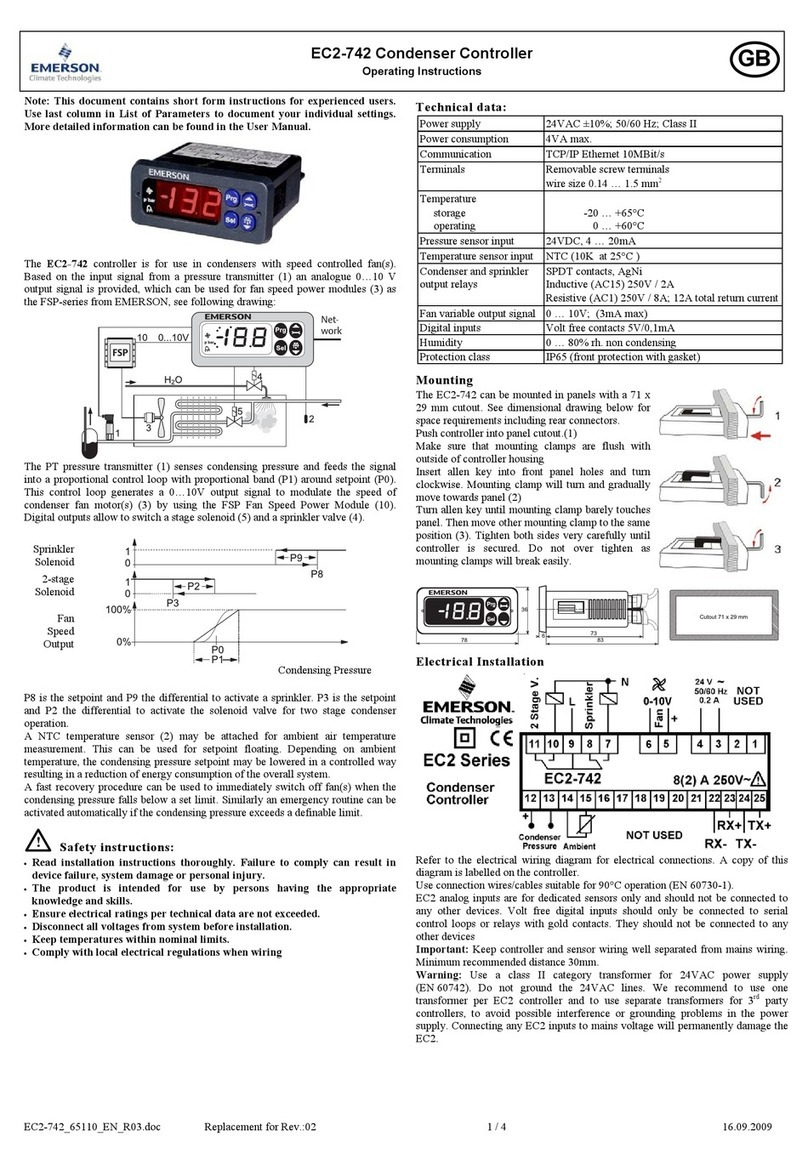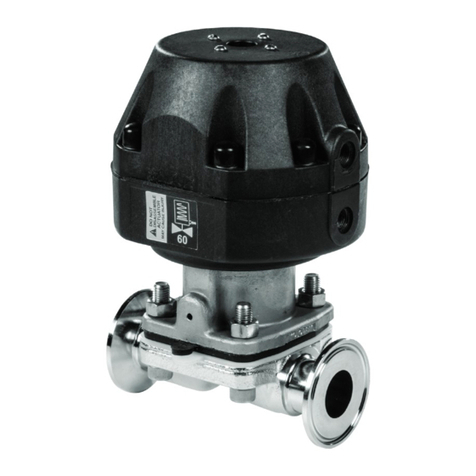
1592023040 XM668D GB r1.1 2011.07.05.doc XM668D 5/14
The Adr parameter cannot be duplicated because in this case the defrost
cannot be correctly managed.
BEGIN
Press for 3 sec, the rtC or other will be showed.
The measurement unit blinks.
Find Adr
Press more than once the DOWN arrow to find the
Adr parameter, the press SET.
Modify
Adr or
Set the value of Adr parameter, then press SET to
confirm the parameter.
EXIT
Press the two keys together to exit from menu or
wait for about 10 sec.
The LSn and LAn parameter are only to show the actual settings (read only). Se the
following example of configuration:
DAILY DEFROST FROM RTC: [CbP = Y] and [EdF = rtC]
idF Parameter: for safety reason force the value of idF at +1 respect to the interval
between two Ld parameters. The idF timer is reinitialized after defrost and at every
power-on.
DEFROST START: at the time selected by the parameters Ld1 to Ld6 or Sd1 to
Sd6.
DEFROST END: if the probes reach the dtE temperature or for maximum MdF time.
SAFETY and rtC or rtF ALARM: with clock alarm the device will use the parameter
idF, dtE and MdF.
WARNING: don’t set [EdF=rtC] and [CPb=n].
MULTIMASTER DEFROST: all the probes with clock
Table for example
n N + 1 N + 2
rtC (clock) rtC (clock) rtC (clock)
Y Y Y
9 hours safety 9 hours safety 9 hours safety
45 min safety 45 min safety 45 min safety
12°C safety 12°C safety 12°C safety
06:00 1° 06:00 1° 06:00 1°
14:00 2° 14:00 2° 14:00 2°
22:00 3° 22:00 3° 22:00 3°
10. DISPLAY MESSAGES
1 nod
No display: the keyboard is trying
to work with another board that is
not working or not present
Press for 3 sec UP arrow,
the SEC menu and select LOC
entry.
2 Pon Keyboard is unlocked
3 PoF Keyboard is locked
4 rSt Alarm reset Alarm output deactivated
5 noP, nP
nA
Not present (configuration)
Not available (evaluation)
6
P2
P3
P4
P5
P6
PPF
CPF
Sensor brake down, value out of
range or sensor incorrectly
configured P1C, P2C to P6C.
PPF can be showed by slaves of
pressure that don’t receive the
value of pressure.
CPF is showed when the remote
probe 4 is not working.
P1: the cooling output works
with Con and COF,
With defrost probe on error the
defrost is performed only at
interval.
For P5, P6 and PPF: the
percentage of the valve
opening is fixed at PEO value.
7 HA
Temperature alarm from parameter
ALU on probe rAL.
8 LA
Temperature alarm from parameter
ALL on probe rAL.
9 HAd
probe defrost probe [dPa / dPb].
10
LAd
probe defrost probe [dPa / dPb].
11
HAF
probe defrost probe [FPa / FPb].
12
LAF
probe defrost probe [FPa / FPb].
13
dA
Door open alarm from input
i2F or i3F = after delay d1d, d2d
or d3d.
Cooling relay and fan follow the
odc parameter. Cooling restart
as specified on rrd parameter.
14
EA Generic alarm from digital input
i1F,i2F,i3F=EAL.
15
CA Severe alarm of regulation lock
from digital input i1F,i2F,i3F=bAL. Regulation output OFF.
16
PAL
= PAL. All the outputs are OFF.
17
LOP Minimum operating pressure
threshold from LOP parameter.
The valve output increases its
opening of dML quantity every
second.
18
MOP Maximum operating pressure
threshold from MOP parameter.
The valve output decreases its
opening of dML quantity every
second.
19
LSH Low superheating from LSH
parameter and SHd delay.
The valve will be closed; the
alarm will be showed after SHd
delay.
20
HSH
parameter and SHd delay. Only display.
21
rtC Clock settings lost.
Defrost will be performed with
IdF till restoring the settings of
RTC.
22
rtF Clock damaged. Defrost will be performed with
IdF.
EEPROM serious problem. Output OFF.
24
Err Error with upload/download
parameters. Repeat the operation.
25
End Parameters have been correctly
transferred.
10.1 ALLARM RECOVERY
Probe alarms P1, P2, P3 and P4 start some seconds after the fault in the related
probe; they automatically stop some seconds after the probe restarts normal
operation. Check connections before replacing the probe.
Temperature alarms HA, LA, HA2 and LA2 automatically stop as soon as the
temperature returns to normal values.
Alarms EA and CA (with i1F = bAL)recover as soon as the digital input is disabled.
Alarm CA (with i1F = PAL) recovers only by switching off and on the instrument.
11. USE OF THE PROGRAMMING “HOT KEY“
The XM units can UPLOAD or DOWNLOAD the parameter list from its own E2
internal memory to the HOT-KEY and vice-versa through a TTL connector. Using
HOT-KEY the Adr will not changed.
11.1 DOWNLOAD (FROM THE HOT-KEY TO THE INSTRUMENT)
1. Turn OFF the instrument by means of the ON/OFF key, insert the HOT-KEY
and then turn the unit ON.
2. Automatically the parameter list of the HOT-KEY is downloaded into the
controller memory: the doL message is blinking. After 10 seconds the
instrument will restart working with the new parameters. At the end of the data
transfer phase the instrument displays the following messages: End for right
programming. The instrument starts regularly with the new programming. Err
for failed programming. In this case turn the unit off and then on if you want to
restart the download again or remove the HOT-KEY to abort the operation.
11.2 UPLOAD (FROM THE INSTRUMENT TO THE “HOT KEY”)
1. When the XM unit is ON, insert the HOT-KEY and push è key; the uPL
message appears.
2. The UPLOAD begins; the uPL message is blinking.
3. Remove the HOT-KEY.At the end of the data transfer phase the instrument
displays the following messages:
End = right programming;
Err = failed programming. In this case push SET key if you want to restart the
programming again or remove the not programmed HOT-KEY.
12. CONTROLLING LOADS
12.1 THE COOLING OUTPUT
The regulation is performed according to the temperature measured by the
thermostat probe that can be physical probe or virtual probe obtained by a weighted
average between two probes following the formula:
value_for_room_regulation = (rPA*rPE + rPb*(100-rPE))/100
If the temperature increases and reaches set point plus differential the solenoid valve
is opened and then it is closed when the temperature reaches the set point value
again.In case of fault in the thermostat probe the opening and closing time of
solenoid valve is configured by Con and CoF parameters.
12.2 STANDARD REGULATION AND CONTINUOUS REGULATION
The regulation can be performed in three ways: the goal of the first way (standard
regulation) is reaching the best superheat via a classic temperature regulation
obtained using hysteresis. The second way permits to use the valve to realize an high
performance temperature regulation with a good factor of superheat precision. This
